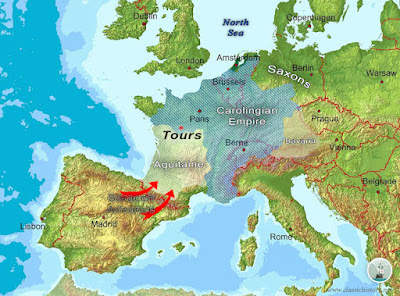For example, a few years after he began his third reign, he launched raids on the Armenian Kingdom of Cilicia (now Turkey). The attacks from Egypt started by al-Nasir continued even after his reign, resulting in the fall of the Armenian Kingdom in 1375.
He also sent soldiers to enter the Mongol-controlled Baghdad, which was much sought after by several invading armies due to its cultural and educational pre-eminence. al-Nasir had sent his men to close the Baghdad bazaar because of its reputation for drinking and prostitution. The wine found by the soldiers was to be destroyed, and any women found selling their bodies were to be pardoned and told to marry as soon as possible. There were mosques in Baghdad, and al-Nasir's name was added to their prayers.
Back in Egypt, Muslims and Christians were becoming hostile to each other. Some Christian churches had been destroyed in parts of Egypt, and some mosques in Cairo were set on fire. Some Christians were arrested in the act of setting fire to buildings with rags soaked in oil.
The sultan ordered the Christian patriarch to attend him to discuss the matter. The Coptic patriarch (John IX of Alexandria) condemned the burnings. Also, word came from the emperor of Ethiopia, warning al-Nasir that Christian persecutions must stop, or else. Investigations led to the arrest of both Muslims and Christians who damaged each other's buildings.
Egypt's power was growing under al-Nasir. Envoys from Pope John XXII and King Philip VI of France came with gifts and letters, along with requests to treat Christians fairly. Philip asked to be given the city of Jerusalem and areas along the Levantine coast; al-Nasir insulted the French envoys and ordered them out of his kingdom.
The coins from his third reign were inscribed with "The Sultan King an-Nasir triumphant in faith and temporal world, The Greatest Sultan King, The Sultan King triumphant in temporal world and in faith, the one who shares with the Emir of faithfuls."
He had many children by wives and concubines. Eight of his sons became sultans of Egypt, as well as four of his grandsons. On a summer day in 1341, he went to the mosque to pray despite feeling ill and in pain, asking the preacher to give a shorter sermon. After prayers, he went back to his palace. The next day he summoned his princes and military leaders and appointed in their presence his son al-Mansur Abu Bakr as his successor, telling that if any of his descendants proved wrong for the throne, he should be removed. He was pronounced dead on 21 July.
He was a very powerful sultan in the end, and increased Egypt's power in the world, so what could the "or else" threat from Ethiopia have been? Tomorrow we meet Ethiopian Emperor Amda Seyon, who had an interesting trump card over Egypt.



















